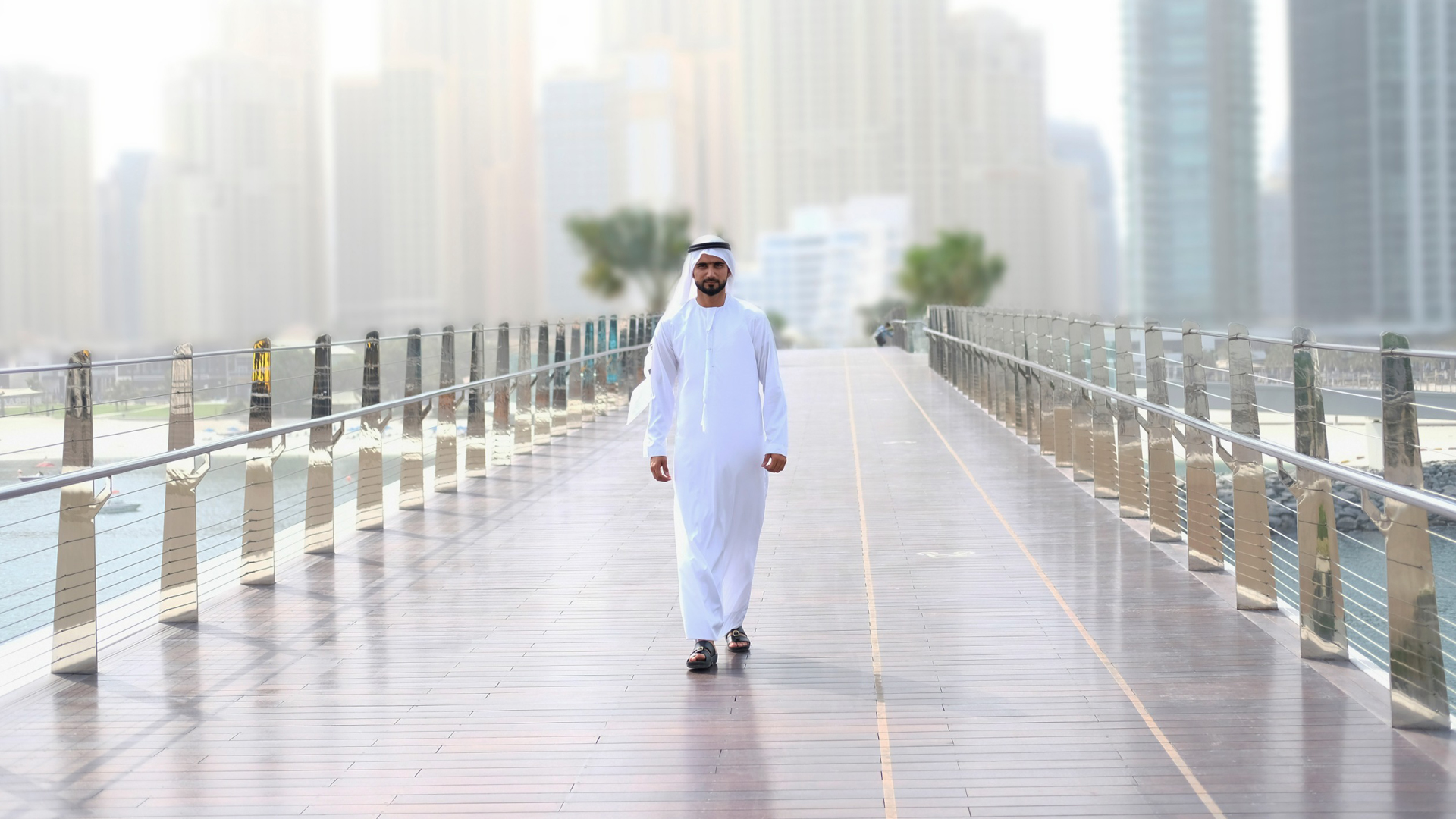The United Arab Emirates (UAE) is a country known for its rich cultural heritage and traditions. The UAE's traditional dress and customs play a significant role in reflecting the country's history, values, and cultural identity. In this article, we will explore the traditional dress and customs in the UAE, shedding light on the beauty, symbolism, and cultural significance behind these practices.
Traditional Dress in the UAE:
- Abaya: The abaya is a loose-fitting, black cloak worn by women in the UAE. It serves as a symbol of modesty and is usually worn over other clothing. Although black is the most common color, abayas can also come in various colors and designs, showcasing individual style and creativity. The abaya not only serves as a cultural attire but also provides protection from the sun and harsh weather conditions.
- Kandura: The kandura, also known as a dishdasha, is the traditional men's garment in the UAE. It is a loose, ankle-length robe made of lightweight fabric, usually white in color. The kandura is not only practical, allowing for airflow in the desert heat, but also represents cultural identity and signifies humility and simplicity. Men often pair the kandura with a head covering called a ghutra or shemagh, which helps protect against the sun, sand, and desert winds.
- Gishwa: The gishwa is a traditional face cover worn by women in the UAE for added privacy and modesty. It is a thin fabric that covers the lower part of the face, leaving only the eyes exposed. While not as commonly worn today, the gishwa holds historical and cultural significance and conveys a sense of tradition and identity.
Cultural Significance of Traditional Dress:
- Preservation of Identity: The traditional dress in the UAE serves as a symbol of cultural pride and identity. It helps preserve and promote the rich Emirati heritage and traditions, allowing individuals to connect with their roots and showcase their cultural identity to the world.
- Modesty and Values: The traditional dress reflects the cultural values of modesty, respect, and humility. It emphasizes the importance of dressing modestly, particularly for women, and encourages individuals to adopt a humble and respectful demeanor in their daily lives.
- Unity and Equality: Traditional dress in the UAE promotes a sense of unity and equality among its people. Regardless of social status, wealth, or background, both men and women wear similar attire, fostering a sense of inclusion and shared cultural values.
- Adaptation to Environment: The traditional dress in the UAE is well-suited to the country's climate and environment. The loose-fitting garments and breathable fabrics help individuals to stay cool in the desert heat, while the abayas and head coverings provide protection from the sun and sand.
Customs and Traditions:
- Hospitality: Hospitality is a key value in Emirati culture, and visitors to the UAE are often welcomed with open arms. It is customary for Emiratis to offer a warm greeting, serve Arabic coffee (gahwa), and dates to guests. This hospitality extends beyond the home to hotels, restaurants, and other establishments, where Emiratis strive to ensure visitors feel comfortable and well-cared for.
- The Majlis: The majlis is a traditional gathering place in Emirati culture, where friends, family, and community members come together to engage in conversations, share meals, and exchange stories. The majlis symbolizes unity, respect, and the importance of community bonds in Emirati society.
- Weddings and Celebrations: Weddings and celebrations are grand affairs in the UAE, where the community comes together to celebrate the union of two families. Traditional weddings usually incorporate cultural rituals, music, and dance performances. Henna ceremonies are also an integral part of Emirati weddings, where intricate designs are applied to the hands and feet of the bride and her female relatives.
- Falconry: Falconry holds a special place in Emirati culture and is considered a traditional sport. Falcons are highly regarded in the UAE, and falconry is a symbol of the country's Bedouin heritage and the close connection between humans and animals.
- Traditional Dances: Traditional Emirati dances, such as the Ayyalah and the Al-Habban, are an integral part of the cultural fabric of the UAE. These dances are performed during festive occasions and celebrations, showcasing the country's rich heritage and engaging participants in rhythmic movements and spirited performances.
The traditional dress and customs in the UAE serve as a window into the country's deep-rooted cultural identity. The attire, including abayas for women and kanduras for men, symbolizes modesty, cultural pride, and a sense of unity among the Emirati people. The customs, such as hospitality, the majlis, weddings, and falconry, reflect the values of respect, community, and a celebration of heritage. By preserving and embracing these traditions, Emiratis preserve their cultural identity, promote unity, and share their vibrant heritage with the world.
